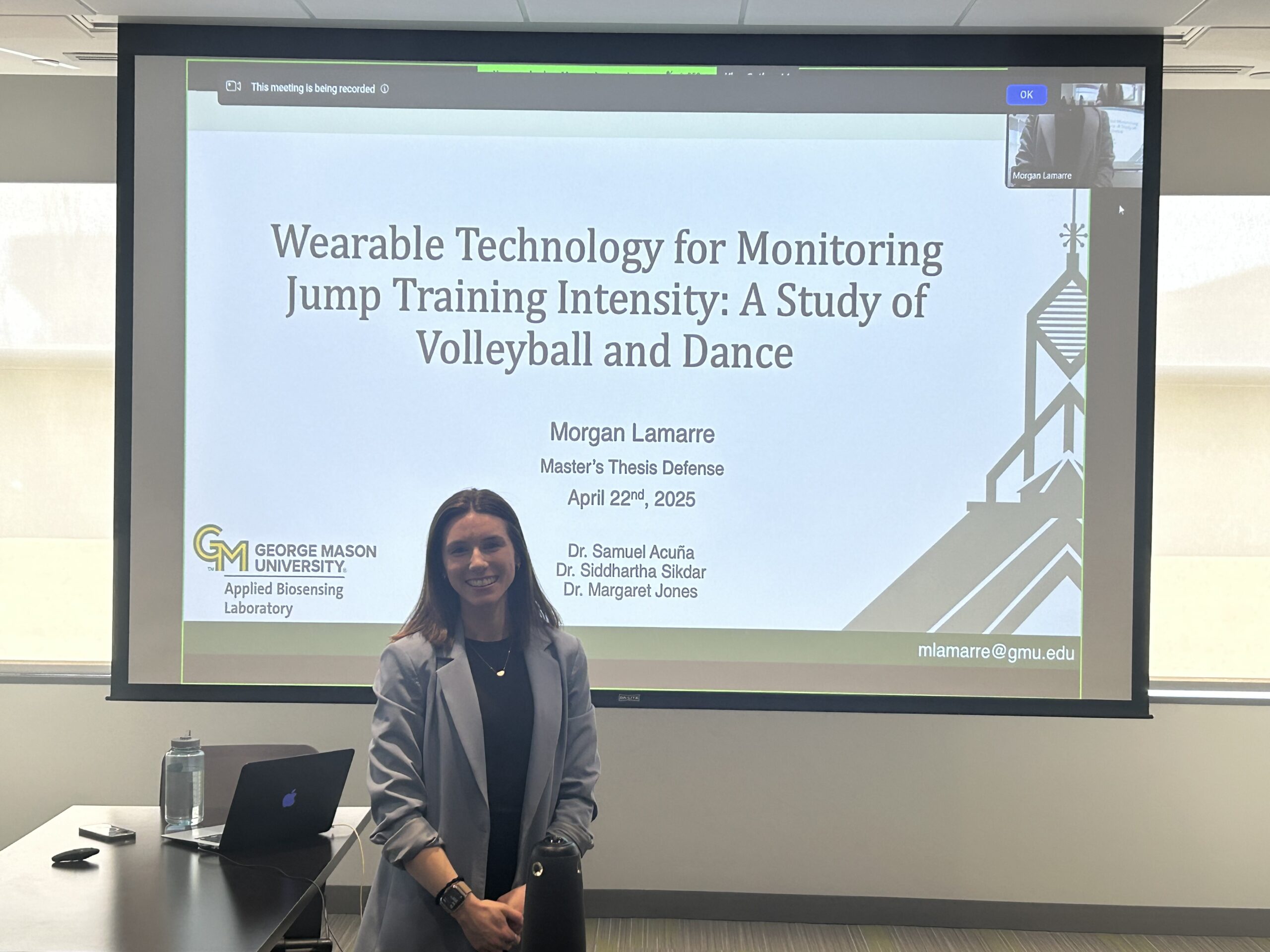Congratulations to Morgan!
Abstract:
Reduction of injury risk is of critical concern for collegiate athletes, as musculoskeletal injuries can significantly impact short-term performance and long-term career sustainability. High-impact movements, such as jumping and landing, are integral to many sports but introduce injury risks. However, early and accurate detection of injury risk factors during jumping is limited because objective biomechanical measurements do not account for subjective feedback when predicting injuries. This thesis investigates the integration of objective biomechanical metrics and subjective exertion measures to improve the prediction of injury risk factors in collegiate athletes, focusing on volleyball athletes and dancers. Grounded in the premise that combining these two data types can enhance injury monitoring protocols, this research explores the relationship between training load, physical adaptations, and perceived exertion in two distinct athletic populations.
The first study examined the impact of repetitive jumping on patellar tendon health in National Collegiate Athletic Association (NCAA) Division I women volleyball athletes. Weekly patellar tendon thickness measurements obtained from ultrasound imaging were combined with objective jump metrics from wearable inertial measurement units (IMUs) and subjective ratings of perceived exertion (RPE) over a competitive season. Results revealed significant positional and leg dominance effects on patellar tendon thickness changes, highlighting the role of playing position and jump landing strategies in injury risk.
The second study evaluated the reliability of IMUs in capturing jump metrics among elite collegiate dancers completing ballet and modern dance movements. This study integrated objective jump metrics from wearable IMUs with subjective RPE scores collected during standardized dance classes. Results demonstrated a high reliability of IMU-measured jump metrics within sessions, consistent measurements across sessions, and differences in landing impacts between dance styles. These results support the use of IMUs as reliable tools for monitoring training intensity and identifying movement-specific injury risks in dancers. This research investigated how IMU jump metrics and subjective exertion relate to patellar tendon morphology in volleyball athletes, as well as expanded the application of IMUs in a real-world setting to dancers, to inform more targeted training management strategies and reduce injury incidence.

